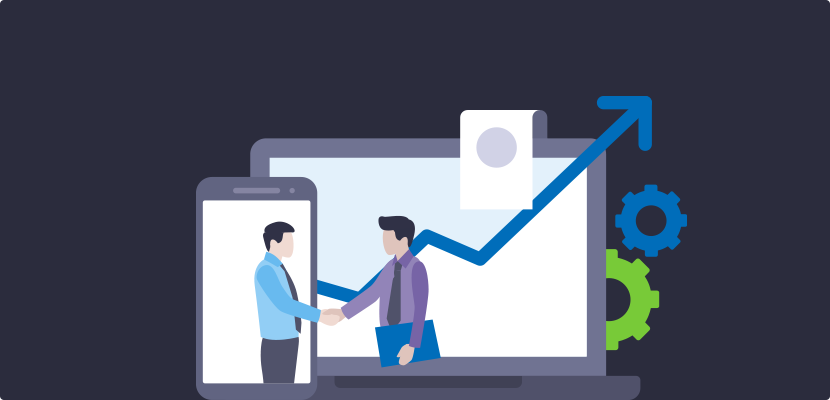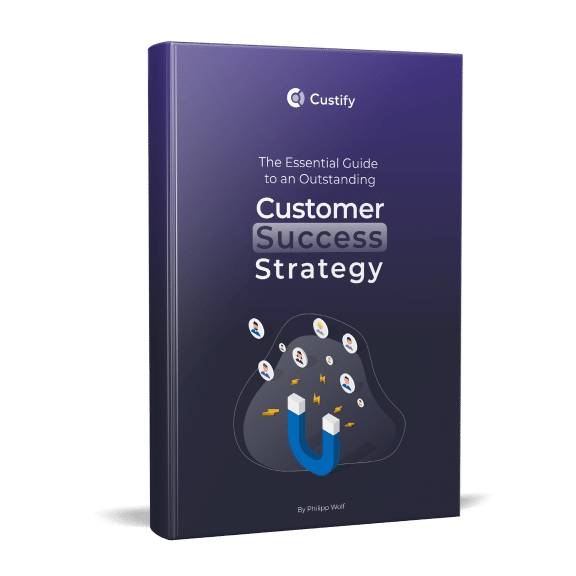
In a conversation about increasing conversions for SaaS, ‘improving the user experience’ and ‘optimizing sign up flows’ get thrown around a lot. Although they are crucial, the process doesn’t end there.
They help get more users to sign up – but a ‘conversion’ is complete once the user becomes a paying customer. SaaS Lead Nurturing is the process that bridges the gap between a sign-up and an active, paying user.
Lead nurturing, for traditional businesses, is usually a process of addressing the questions, fears, and uncertainties that are preventing the user from completing a purchase. For example, if a homeowner is looking to redo their roof, they go to the relevant businesses’ website and put in a query. The business then gets in touch with them, providing relevant solutions and pricing, answering any questions the user has along the way. Here, the user already has a ‘defined need’ for the product, or are aware of the service existing.
SaaS Lead nurturing is trickier. You need to convince the users that the problem you’re solving is real and can help the user enormously if solved. Hence there are additional tasks of ‘creating demand’ and making the user aware that a solution to the problem they’re looking to solve exists. As a company, you also need to prove your credibility to convince the user that you are an expert in solving these problems.
At the very core, SaaS lead nurturing consists of delivering highly targeted content, help, and messages at the right time to form human connections with your users. By providing value, you ‘nurture’ them to grow more familiar with you. This human connection helps you convert more users at end of their journey. It can be broken down into three major steps:
1. Segmentation
The first step in delivering targeted content consists of defining the targets, which is what segmenting essentially is. Segmentation involves grouping your customers on the basis of data you’ve collected and other explicit and implicit characteristics. It is crucial as it helps you understand your user base, and make your interactions with them more warm and personal.
Segmentation can be done on the basis of various factors in various ways.
Buyer Personas
This is one of the most powerful ways of segmenting your users. Buyer personas are fictional representations of your ideal customers and intended buyers. They outline the basic demographics, interests, behavior patterns, motivation, and goals for these people, based on market research and current user data. The aim is to make the representation as close to the real human as possible.
Marketing and customer success in SaaS are about empathy and forming a human connection more than anything else. Personas allow you to see your users as real humans, rather than just data points. By ‘getting into the head’ of your ideal buyer, you can create targeted content which actually speaks to them, instead of just talking about your company. Emotions play a part in most buying decisions, and knowing those of your users will allow you to trigger them at the right moment.
Another important factor to consider while segmenting users is where they are in their buyers journey with you. Are they simply ‘looking around’ if their problem actually exists? Are they already considering buying, and evaluating different competitors? This can be understood by tracking user behavior and interactions with your website and your content (using customer success tools like Custify). For example, if a user has visited your pricing page 2 times in the last 2 day, they might be interested in buying immediately. If they downloaded your content guide to ‘social media marketing’, they might be interested in the products related to that field.
The possibilities with lead segmentation in SaaS are endless. The secret to successful segmentation lies in creating actionable, homogenous groups which are distinctive enough from each other.
2. Content Creation
Once you have segmented your audience effectively, you will have defined targets that you need to hit with content. The power of reciprocity is at the core of any good SaaS lead nurturing strategy. It basically means the more you give, the more you receive. In SaaS terms, it would mean the more value you provide to your customers via content, the more trust you receive from users.
When you have reciprocity in mind, the aim for your content is to converse with the users in each segment. Speak to them in their language and situations they are familiar with.
Imagine a solo entrepreneur in their early 20s signs up for a free trial of your service. The content you send out to them could be quirky and humorous in nature, and talk about dealing with the stresses of running a business alone. Your product also caters to the enterprise level to large businesses. If a middle-aged executive signs up for the same, your interactions would perform better if they are in a formal, professional tone, talking about how your service could optimize company processes (for example).
Speak to users like a helpful friend who understands all their problems. For you, all the content you create should be aligned with your end goal for that segment and that part of the buyer’s journey. For example, a user who downloads a helpful content resource should be targeted with more helpful content around the same topic over time. On the other end, a user who requests a pricing/ details needs to be shown why you are better than your competitors to convince them to buy your service.
3. Content Delivery
Once you’ve found your targets and your bullets are ready (content creation), it is time to start firing. Content delivery is about 2 things: picking a medium and picking the right moment to deliver the content.
The mere exposure effect is a great tool for lead nurturing. Also known as the familiarity principle, it proves that people develop preferences for things just because they are more familiar with them. Hence, to answer the question of timing, you need to be constantly providing value with your content over time.
Drip email campaigns fit the bill for this perfectly. Drip campaigns are automated processes that send a set of messages or content to leads at the right moment to move them through the sales cycle. Remember when we talked about sending the right message triggered by specific user behavior? Emails work perfectly for those.
In fact, 59% of B2B marketers say email is their most effective channel in terms of revenue generation.
Since emails are such an effective way of nurturing, it is essential to do them correctly. We will talk about some psychological hacks for email to help boost your SaaS lead nurturing.
Micro Wins
Micro wins are actionable tokens which provide quick value to the user. They don’t take much time for the user to put into action and help them with real problems. Every email you send out should contain such a micro win for the user. As they will see value in each email, this will result in consistent open rates throughout your drip campaigns. It is also important to remind the importance of engaging and reading your content in each email. It maintains your value in their brain. This will prevent your email from going into the ‘unopened’ pile in user inboxes. This is how your perceived value adds up over time
Micro wins can be a wide range of things based on your industry i.e. eBooks, strategy whitepapers, mini-courses, access to exclusive videos/content, or anything else that can help users. Another helpful type of micro-win can be quick application tactics or ‘hacks’ which they can implement to see results right away. For example, an email marketing software could include a quick trick that boosts click through to try right away. Once people implement that trick and start seeing results, they will attribute it to the company that taught them that trick. It is best to customize your micro wins as per your service and your user base segment.
Habit Building
Human beings are more likely to do things that they are acquainted with.
Define how you wish the user to respond to your final sales email. Model that process and embed that in every nurturing email that you send. For example, let's assume the purchase process looks something like this – the user clicks a CTA, reaches a landing page and completes the payment.
For all your nurturing emails, provide a bold, clear CTA. Take them to a landing page which provides the value that was promised. Provide them value to the point that they know they are going to get something in return whenever they interact with your email. This will make clicking the CTA in your email and providing details a habit for the user - and make them more them more likely to do so when you send your final sales email.
SaaS Lead Nurturing: In Conclusion
While it seems like simply sending out emails on the surface, lead nurturing is a methodical and calculated process. Segment your users correctly, create the right kind of content, and set up the right triggers and points where users have to be interacted with.
When done right, it can generate highly positive results. In fact, companies that excel at lead nurturing generate 50% more sales-ready leads at a 33% lower cost.




